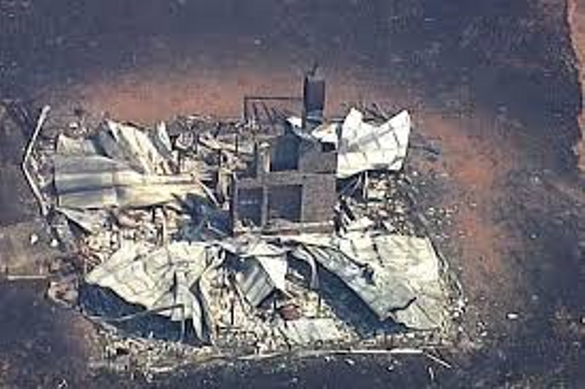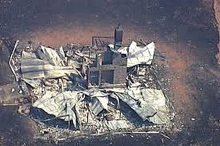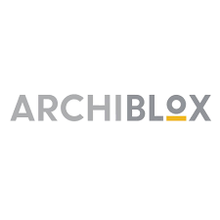 19 Jan 2020
19 Jan 2020

Everyone can remember at least one of the major bushfire disasters of recent years, as a result of these unfortunate events, tighter controls have been implemented to assist in building recovery efforts and keeping our communities safer.
When considering this concern, the first thing you need to do is check whether you are in a Bushfire Prone Area.
A Bushfire Prone Area is recognised by the presence of, and proximity to, bush fire prone vegetation, and includes both the area containing the bush fire prone vegetation and a 100m buffer zone immediately surrounding it.
Victoria
You can find out if your Victorian property is in a Bushfire Prone Area by entering the address on VicPlan and creating a free planning property report. You can also use land.com.vic.gov to generate a similar report.
New South Wales
If your looking at property or live in NSW you can check NSW Rural Fire Service to check for bushfire prone areas.
Bushfire Management Overlay
In Victoria, if your land falls within a Bushfire Management Overlay (BMO) a planning permit will often be required, depending on the council. This will entail detailing the appropriate measures your home will have to protect itself from the potential bushfire risk.
You can check this through the free property reports as mentioned above.

Image: Crackenback Stables | By Casey Brown Architecture

No need to panic, as design has come along way in implementing materials and methodologies to still help you achieve a beautiful home which meets regulation. However, you will need a BAL assessment to determine the level of risk and therefore, the level of compliance you need to achieve.
All new homes constructed in a Bushfire Prone Area, must be built to a minimum BAL 12.5 to help withstand ember attack.
This includes sealing roofs, sealing around doors and windows and screening windows.

Every new home built or renovated in a bushfire prone area must undergo a BAL assessment as part of the application for a building permit. The site BAL assessment determines the construction methods that must be used to better protect properties from the threat of bushfires.
A BAL assessment is an inexpensive report which is conducted by a suitably qualified assessor to determine the Fire Danger Index (FDI), the slope, exposure to ember attack, radiant heat, direct flame contact and the type of vegetation on the property and it's distance to your home or site. There are six BAL ratings, from LOW to FLAME ZONE, and each of these have different requirements when it comes to the construction and materiality of your home. As the risk of bushfires impacting your property increases, so do the construction requirements for your new home.
At Archiblox we are able to work with most sites, with a range of different BAL ratings, including 'Flame Zones' (FZ) which is the highest rating you can get. The extent of the changes to the design, materials, and engineering will vary according to the site's rating*.

Choosing the Right Site
It's important to consider BAL ratings if you are still on the hunt for your slice of paradise. Sites with steep slopes and high density of vegetation can lead to a higher BAL ratings if they are situated in a bushfire prone region. However, modification surrounding the allotment/dwelling can be undertaken to reduce the BAL and flame exposure risk.
Archiblox homes are built to a standard of BAL-29, but can certainly accommodate higher BAL ratings all the way to Flame Zone by simple substitutions in materials and structural design changes. Below are material recommendations and inclusions which come part and parcel with an Archiblox home.

Image: Clydesdale House
Timber
Timber can be an extremely durable cladding. You can stain it, paint it or even leave it to weather naturally. It has a coastal & rural feel, blending seamlessly with the natural environment.
Archiblox uses fire resistant timbers such as; blackbutt, spotted gum, merbau, turpentine, red ironbark, red river gum and silvertop ash. We highly recommend oiling timber elements such as cladding & decks. Face fixing timber cladding should have 2 coats of oil to withstand such conditions.
Steel Frame Structure
All Archiblox modules are built using a steel frame system. The system is designed to resist ignition and not provide fuel to the fire. It also is extremely durable to the elements in rural and coastal environments.
Windows & Glazing
Typically Archiblox uses 6mm toughened glass with Aluminium / Metal Reinforced uPVC. For 'Flame Zone' external metal shutters should be introduced to all openings.
We also work with clients to position the house and windows to protect against potential bushfires and to take full advantage of winter sun and protection from harsh summer sun.
Cladding
Corrugated Steel is a low-maintenance fire-resistant façade used throughout Archiblox homes, it also helps to reflect heat assisting in keeping the building cool in summer.
Specific fibre cement panels are also used in our designs, they are BAL compliant and offer a lightweight, sleek and modern aesthetic.
Decks
For decks, Archiblox uses a steel structure which is then clad in fire retardant timber. We ensure that the space between the decking timbers is minimised and the area underneath the deck is sealed off to prevent any embers becoming trapped underneath the house.


Image: Fish Creek House built to BAL-29
Image: Crackenback Stables House | By Casey Brown Architecture
Depending on your BAL rating and council regulations, we recommend leaving a 5m wide path between the house and the garden and choosing plants that are fire retardant or fire resistant and will survive the bushfire season without dropping small branches into gutters, increasing your risk.
Always monitor the growth of trees and shrubs so that pruning is maintained, dead limbs removed, leaves put into compost bins with lids.
We suggest positioning pools, paved areas and lawn breaks between the house and the direct fire threat to further reduce risk.
Water tanks should also be included dependant on the BAL ratings. However, restrictions for storage, access, signage and water tank configuration, among other things can vary between states, your location, the size of your property and the type of dwelling.


Image: Gold Dust Wattle | By COPbiodiversity
Image: Red Velvet Kangeroo Paw | By Tuffy Plant Collection
Soon to be installed on site, our 'Flame Zone' house fully complies with the most extreme BAL rating. Some of the bushfire safety features which have been included to this home is external shutters to all openings, commercial fire rated doors and windows, and fire collars to all penetrations.

Image: Flame Zone House | By Archiblox
For more home inspiration, check out our Completed Projects page to see some of our favourite previous designs.
Need help designing or building a home in a bushfire prone area? Please contact us! We would be happy to help.
Note:
* – Site-related costs may vary. Archiblox can project manage these site issues (once engaged). Please note, visits to the site will occur once engaged.
Content source: Bushfire Prone
Content source: CFA
Content source: Victorian Building Authority



